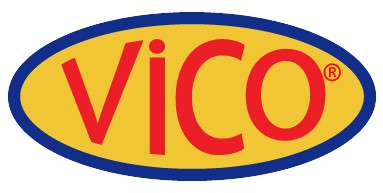-
-
-
Total payment:
-

What is Pitting Corrosion?
Posted by Vico Casting Export Company Limited at 25/11/2022
Pitting corrosion is characterized by the formation of a hollow, hole, or pit in a limited area or point. A slight quantity of corrosion product (rust) on the surface obscures the pits or holes. A pit, cavity, or small hole will emerge when a cathodic reaction in a wide region (coating) sustains an anodic reaction in a small area (exposed metal). Even in the absence of oxygen, oxidation happens in the metal.
The huge cathode places a high electron demand on the small anode, resulting in significant pitting corrosion. It will be subtle and swift, with disastrous consequences. Only a small bit of rust can be seen on the surface, while the damage occurs deep into the metal structure underneath.
What Causes Pitting Corrosion?
When the cathode (damaged coating) is large and the anode (exposed metal) is small, pitting corrosion develops. When the surface protective layer or film is damaged and cracked, it becomes the cathode. After that, a little portion of metal is exposed and becomes the anodic.
When the fluid on the metal surface contains chloride, hypochlorite, or bromide ions, pitting is strong. Fluoride and iodide-containing liquids are also dangerous. Sulphides and water have also been shown to improve pitting.
The most common pitting corrosion causes are;
- Cracks in protective coating
- Scratches, scuffs & small chips
- Non-uniform stress
- Defective metal substrate
- Turbulent fluid flow
- Non-uniform protective coating
- Chemical attack on protective coating
Metals prone to pitting corrosion are;
- Stainless steel
- Chromium
- Passive iron
- Mercury
- Cobalt
- Aluminum
- Copper
- Associated alloys
Types of Pitting Corrosion
Trough Pitting Corrosion: Trough pit morphologies are often hemispherical, cup-shaped, or irregular in shape. When the passive film (protective layer) is undermined, the metal wall is attacked, resulting in narrow and deep troughs. Their flat walls reveal the metal's crystal structure. These can quickly perforate a material's thickness, such as a roof sheet, truss, or gutter component.
Sideway Pitting Corrosion: Sideway pits develop in horizontal grain attack, undercutting, and subsurface forms and are covered with a semi-permeable membrane of corrosion product (rust). Sideway pitting corrosion can swiftly permeate the metal. It is extremely difficult to identify because the metal's surface appears untouched and devoid of corrosion. With only a few little patches of rust, the damage may appear to be insignificant.
How to prevent and protect against Pitting Corrosion?
Pitting corrosion can be controlled by:
- Use of a coating that will prevent pitting on metal surfaces
- Using more corrosion resistant materials
- Ensuring that the fluids in contact with the material is washed away regularly
- Use of cathodic protection
- Avoiding stagnant zones
- Inhibitor use / fluid chemistry control
- Maintain the protective film of the material











